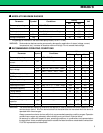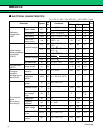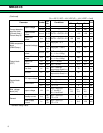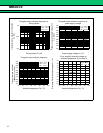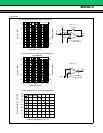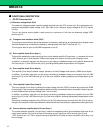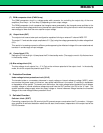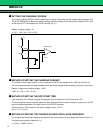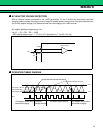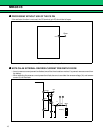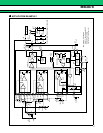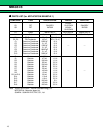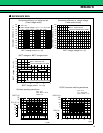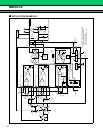
MB3878
13
(7) PWM comparator block (PWM Comp.)
The PWM comparator circuit is a voltage-pulse width converter for controlling the output duty of the error
amplifiers (Error Amp. 1 to Error Amp. 3) depending on their output voltage.
The PWM comparator circuit compares the triangular wave generated by the triangular wave oscillator to the
error amplifier output voltage and turns on the external output transistor during the interval in which the triangular
wave voltage is lower than the error amplifier output voltage.
(8) Output block (OUT)
The output circuit uses a totem-pole configuration capable of driving an external P-channel MOS FET.
The output “L” level sets the output amplitude to 5 V (Typ) using the voltage generated by the bias voltage block
(VH).
This results in increasing conversion efficiency and suppressing the withstand voltage of the connected external
transistor in a wide range of input voltages.
(9) Control block (CTL)
Setting the CTL terminal (pin 14) low places the IC in the standby mode. (The supply current is 10 µA at maximum
in the standby mode.)
(10) Bias voltage block (VH)
The bias voltage circuit outputs Vcc − 5 V (Typ) as the minimum potential of the output circuit. In the standby
mode, this circuit outputs the potential equal to Vcc.
2. Protection Functions
Under voltage lockout protection circuit (UVLO)
The transient state or a momentary decrease in supply voltage or internal reference voltage (VREF), which
occurs when the power supply is turned on, may cause malfunctions in the control IC, resulting in breakdown
or degradation of the system. To prevent such malfunction, the under voltage lockout protection circuit detects
a supply voltage or internal reference voltage drop and fixes the OUT terminal (pin 20) to the “H” level. The
system restores voltage supply when the supply voltage or internal reference voltage reaches the threshold
voltage of the under voltage lockout protection circuit.
3. Soft-start Function
Soft-start block (SOFT)
Connecting a capacitor to the CS terminal (pin 22) prevents surge currents when the IC is turned on. Using an
error amplifier for soft-start detection makes the soft-start time constant, independent of the output load of the
DC/DC converter.



